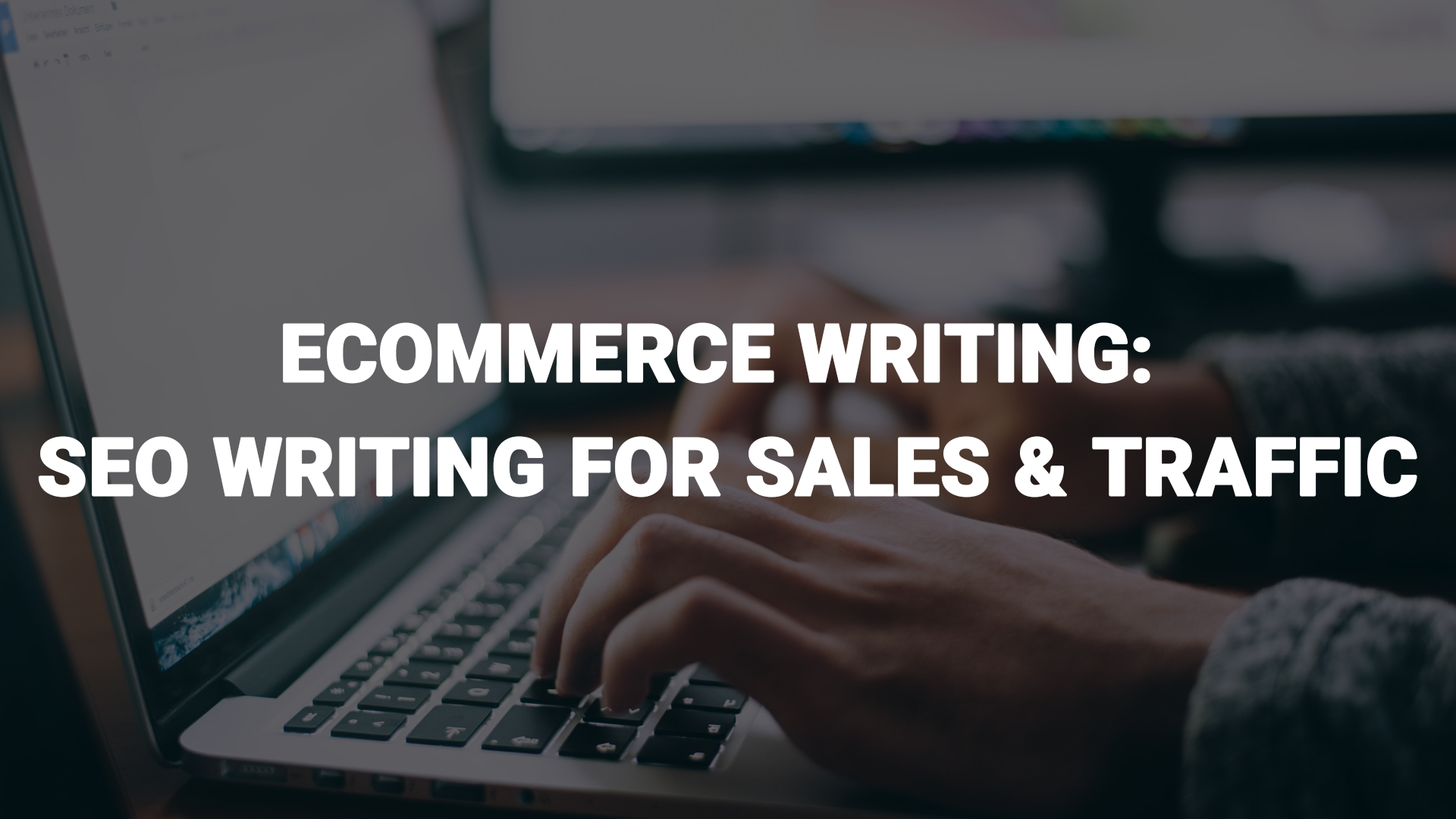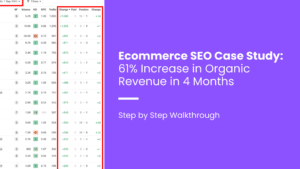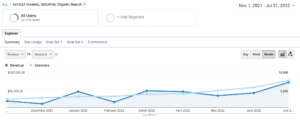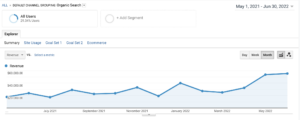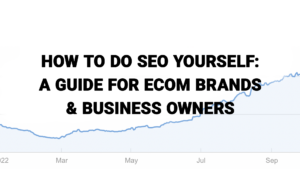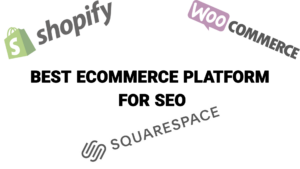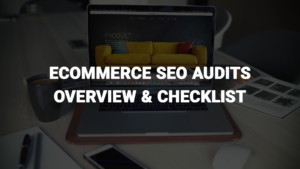If you own an eCommerce website, one of your primary goals is to get as much qualified traffic to your website as possible. One of the best strategies for generating traffic is to leverage Ecommerce writing strategies for SEO, also known as Search Engine Optimization.
SEO is a strategy for getting your website pages to rank high on Google. In addition to building backlinks, one of the best ways to influence your rankings is to write great content, especially if you run an eCommerce business.
The Goal of Ecommerce Content
The overall goal of eCommerce copywriting is to convert website visitors into customers. To successfully do so, you’ll need to understand what questions your customers have and what features and benefits matter to them most.
Your website content should also align with your brand personality, voice, and tone so that your brand has a consistent voice across all of your brand communications.
Ideally, whether a visitor lands on your homepage, one of your product pages, or a blog post, your writing will lead them to make a purchase.
How to Prepare Your Content Briefs
No matter what kind of writing your doing, before you start writing you should put together a content brief. A content brief will help keep your writing organized, and focused, and provide you with a game plan to meet your writing goals.
If you find the SEO content process overwhelming or don’t have the team in place to write for you, you should consider white label SEO content services.
Keyword Research for Ecommerce Writing
When it comes to SEO writing, the first item you should focus on is keyword research.
Your keyword research will help set the foundation for what phrases and keywords your content will focus on. You’ll first want to identify a “primary” keyword that acts as the overarching theme for the page you’re writing. Your primary keyword should be one that your website has enough authority to compete for and that you can also share expertise on.
Once you have a primary keyword, you should also find some secondary keywords to include in your content. Secondary keywords can make great sections or headlines within your content and help you flesh out your writing.
Searcher Intent
Before you choose just any keyword, you should make sure it has the right intent. Searcher intent takes into account what exactly a searcher is looking for when they put a keyword into Google.
Some keyword phrases might have more informational intent, meaning the searcher is looking for specific information, but other phrases might have more transactional intent, meaning the searcher is likely to purchase a product.
You can always do a Google search for the keyword and see what websites are already ranking. Do they look like sites your website can compete with? Does the intent make sense with your goals for this content piece? If so, get to writing!
Making an Outline
Once you understand which keywords you want to use, their intent, and how difficult a keyword is to rank for, you’ll want to make an outline of topics to cover. It can be helpful to review what is already ranking on page 1 of Google and then also brainstorm what you can expand on and add to what is already ranking.
It can also be helpful to include some of the “people also ask” questions that show up when you do a Google search. These questions are topics searchers also search for when searching the topic you’re writing on and can be a guide for the additional value you can include in your writing if you include answers to those questions in your content.
Types of Ecommerce SEO Content Pages
Homepage
The homepage is often the most important page on your website. From an SEO perspective, it also winds up being the most authoritative. For most home pages, I aim to have the homepage rank for both the brand’s brand name and for the keyword that could act as the parent topic for everything the business sells or does.
Parent-topic keywords tend to be a bit harder to rank for, making them a perfect fit for the focus of your home page. This is because your homepage has the most authority to pass along to other pages and can act as a topical hub for the entire website.
As an example, let’s say your business makes custom hardwood furniture. And more specifically, you make three different core types of products. Hardwood tables, benches, and dressers. For an eCommerce site like that, I would make the primary keyword for the homepage something related to “custom hardwood furniture” and then create 3 collection pages, one for hardwood tables, the second for benches, and the third for dressers.
The goal of the homepage is to convince the visitor to click on a specific product or collection page. That’s it. You might be able to get someone to buy just from seeing the homepage, but in most cases, people are going to explore a few products and pages on your website prior to making a buying decision.
Your homepage should communicate the core values, features, and benefits of what you sell, and then lead the visitor directly to the product that provides the solution they’re looking for.
Collections
Collection pages are an often overlooked but very powerful type of page for an eCommerce website. A collection page highlights a specific collection of products. This allows you to target specific keywords related to that product collection and there’s no harm in creating additional collection pages to target hyper-specific keywords that matter to your business.
When it comes to the actual content on collection pages, most people only include the name, price, and image of the products in the collection. If you want to go above and beyond, add in a paragraph or two of introductory copy to the page. The added copy will provide some topical relevance and also communicate to the user that they’ve landed in the right place.
Product Pages
If you want to sell products you’ll need robust product pages. To start, you’ll want to include product descriptions for all of your product pages. Product descriptions should highlight the features and benefits that your products offer.
Do your best not to make them dry or generic or only a bullet point list of product specifications. Instead, get the site visitor excited about your product. Make them feel like they understand what it will be like to own this product and put it to use.
Blog Content
Blog content is often the missing piece to the SEO puzzle for many eCommerce brands. Either they aren’t consistently investing in content marketing or they aren’t doing it correctly.
Your blog posts have the power to act as supporting content for your product and collection pages. By answering the questions your ideal customers ask, you’ll show up on Google for those informational and investigative searches and introduce an entirely new group of people to your brand.
Blog content also adds topical relevance to your website, showing you have expertise on the specifics of your niche. Additionally, internally linking from your blog posts to product and collection pages helps tie together related ideas and concepts that can get your website to rank for additional keyword variations and topics.
Ecommerce Copywriting Tips
Even with the right keywords and a solid content brief put together, eCommerce copy is a bit of a different beast than a normal blog post or service page. Since the goal is to sell a product, you’ll have to employ some advanced techniques to get your website visitors to complete a purchase.
Write at the Right Reading Level
If you’re reading this blog post, you likely have at least a high school or collegiate-level reading comprehension level. You might be surprised to learn that a majority of people do not read at a high reading level at all. In fact, most people feel comfortable reading at a 5th to 8th-grade reading level. So keep your copy exciting, but don’t use too many 10-cent words or complex sentences.
Highlight Features & Benefits
It’s not enough to list out the specifications of your product or write a few blanket statements on what your product does. Instead, you want to highlight the features your product has and the benefits those features provide. This will help your website visitors imagine they already own the product and help them visualize what it might be like to own the product. If you nail this, they’ll be in the checkout in no time at call.
Tell a Story with Your Brand
People are tribal by nature and love storytelling that makes them feel a part of something. You can write your copy and construct a brand story in a way that enchants your customers into not only being excited about purchasing a product they need but also buying something that connects them to something larger than themselves.
Think about how certain clothing brands or sports teams bring people together. Your brand and eCommerce copywriting can do that too.
Describe a Transformation
Everything we buy transforms our lives in ways big and small. Our morning cup of coffee from Starbucks might not seem like a big deal, but it could also be a core part of your routine, the thing that gets your day started on the right foot and connects you to your community via a local barista.
Or you could be selling a car that will keep your family safe and take you on adventures across the country. The point is, products matter! They create amazing transformations, but you need to explain the transformation in order to get people to buy. You’re selling a product, but you’re also selling the experience that comes with it.
Organize Your Content Properly
People aren’t online to read books (usually.) Instead, they want information as quickly as they can get it. Your eCommerce copy should be easy to scan and organized in a way that takes a few seconds for your website visitors to find what they need. At the end of the day, this is all about respecting your customer’s time.
One of the best ways to organize your content is using the right HTML headings, lists, icons, and images. These components will make it easy for your reader to digest your content without feeling like they are reading a Ph.D. thesis.
Looking to take your Ecommerce content to the next level?
If your eCommerce sales have been stagnant or on the decline, giving your content an SEO boost with some freshly optimized content can help point your site in the right direction. Noah Kain Consulting offers personalized strategies to eCommerce brands of all sizes. Contact our team today to get started.
